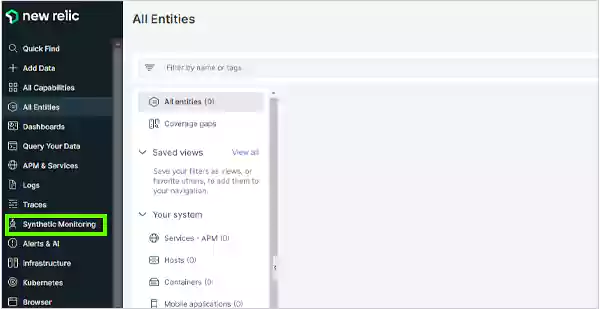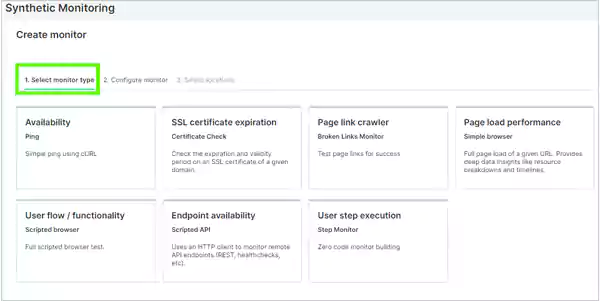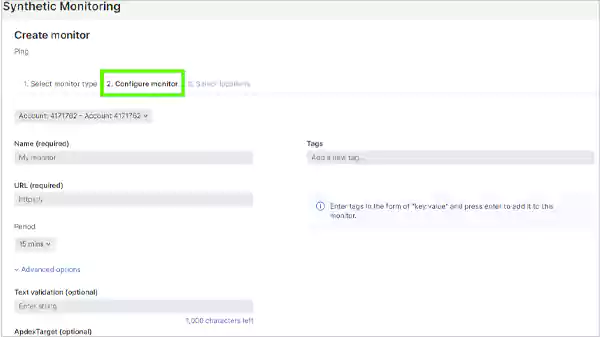Do you know that your website can crash any day?
Considering the essentials to create your website, and keeping an eye on its performance metrics can be of huge help, but several other factors can disrupt its productivity.
So, before you miss the boat, you must know that a software wizard called Synthetic Monitoring can save your website from this problem.
But if you have no idea what it is and are wondering how to get Synthetics Monitoring to work in New Relic, this write-up will provide you with the answer and help ensure your website runs efficiently.
But before that, you must obtain some useful trivia.
Synthetic Monitoring is a method to monitor the performance, ability, and functionality of any web application, website, or API.
It combines Machine Learning and AI technology to predict if anything unusual will happen or not. So, if there’s a chance of your website crashing, you’ll get alerts immediately!
When it comes to applications, Synthetic Monitoring can point out any peculiarities in them by sending data to the servers and comparing it with historical trends.
As web architectures become more complex day by day, this method evidently plays a pivotal role in checking any website’s performance and availability.
New Relic is a cloud-based application performance management (APM) software that helps you monitor your app’s performance, health, and ongoing changes.
Moreover, New Relic supports multiple programming languages, frameworks, platforms, and cloud-based applications. It will give you real-time insights into the performance of the digital systems and proactively detect and resolve issues.
With Synthetic Monitoring, New Relic allows businesses to replicate user interactions and monitor the performance of their websites. But how does monitoring New Relic work with Synthetic? Let’s find out in the next section.
Now that you know the effectiveness of New Relic and Synthetic Monitoring in terms of performance analysis, let’s look at the steps for New Relic security monitoring.






That’s it; you’ll just need to let New Relic monitor the data and give you alerts promptly whenever there’s a problem.
However, you must know that the specific list of steps and options mentioned here may change depending on the version of New Relic and the features included in your subscription.
Before the introduction of Synthetic Monitoring, there was a manual monitoring system called Real User Monitoring (RUM). While Synthetic Monitoring predicts and alerts about the issues, RUM requires you to manually tag the actions rather than emulating them.
To understand the difference between the two, you can refer to the table below:
| Parameter | Synthetic Monitoring | Real User Monitoring (RUM) |
| Monitoring | Monitors the whole system | It works only during off-peak hours |
| Condition | Network and browser conditions | Real user condition |
| Extent | Offers competitive benchmarking | It gives full web performance |
| Website Implementation | Works on any website | Works on only your website |
| Off-peak Monitoring | Available | Very limited |
| JavaScript | Not required | Required |
| Range | Global | Only limited locations are preferred |
| Root Cause Identification | Available | Not available |
| Suitable for benchmarks | Yes | No |
So, these are the key differences between Synthetic and Real User Monitoring that clearly show the former is better than the latter.
After going through this New Relic Monitoring overview, you must wonder about its safety factor.
In that case, New Relic is pretty safe and highly secure while protecting your website and applications from potential threats. Here’s the list of features that make it a reliable option:
So, with the availability of such features, New Relic ensures data safety and makes the whole process free of concern.
Coming to the end of this write-up, you must have realized that Synthetic Monitoring can protect your website or app from any potential issues. Using it with New Relic can surely protect your website from crashing and help provide a positive experience to visitors.
The demand for Synthetic monitoring in the modern digital landscape is increasing day by day. Businesses and individuals have been using it as an effective tool for performance management, and it has been helping them to stay one step ahead of any unwanted threats.
Ans: Yes, New Relic supports Synthetic monitoring and protects your website or application from potential threats.
Ans: Visit one.newrelic.com and go to Synthetic Monitoring > Create a Monitor. From there, you can choose the user flow/functionality for the scripted browser.
Ans: In New Relic, you’ll mostly find three types of monitors, and they are – Scripted Browsers, Ping Monitors, and API Tests.
